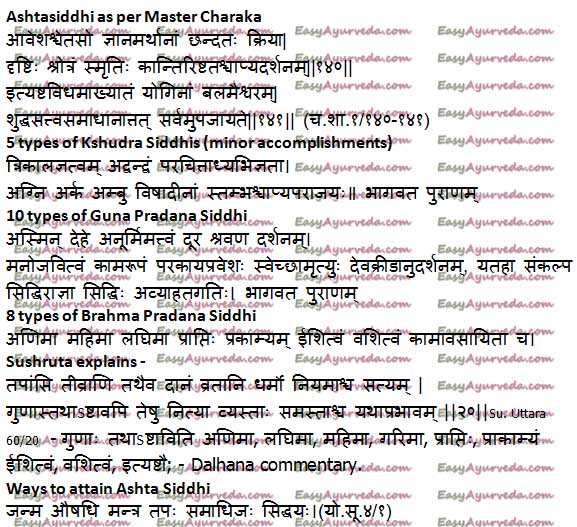
Standing leg raise is a basic pose for beginners. Stand with your knees bent and your feet in line. Reach one hand to the sky, looking up at your fingertips. Hold both hands at shoulder-width apart. This pose benefits your back, thighs and hamstrings. It also strengthens your core and tones your legs. It takes six to eight repetitions to master this position.
The staff pose can be compared to the mountain position, but it is a seated version. It allows beginners to get used the alignment principles that are required for seated poses. To perform this asana, you need to engage your leg muscles and lift your chest, while relaxing your shoulders. This will allow for you to relax your shoulders which will result in a gentle bend of your knee. You can also modify the position by placing a prop on top of your knees.
A great way to finish a yoga class is the downward-facing dog pose. If you are just beginning, this pose can be a great place for you to start. It's important to keep your hips high and stretch your heels toward the floor. The floor doesn't require you to touch it, but it can stretch your outer hips. To help ease the process, bend your knees to keep your hips parallel.

The corpse pose is a great transition pose. While it can be challenging to get your body to a relaxed state at first, it becomes easier over time. You can get the most from your yoga practice by giving yourself ample time and taking a few minutes every day to review your posture. Regular practice will bring you both mental and physical benefits. Yoga practice every day has immense benefits.
The most popular pose for beginners is the triangle position. It strengthens your chest, hamstrings and improves your posture. It is an excellent starting point for beginners in yoga. The Seated Spinal Twist, which is a popular pose for beginners, is another popular one. This stretch strengthens your legs and lower back. It can also be used to strengthen the back.
The twist pose can be a great introduction to twists in yoga. The twists can lengthen your bottom leg and alleviate back tension. Although this pose is difficult for those with back problems, it can help strengthen your legs, build your back, and strengthen your legs. This is an excellent exercise for beginners. You can start by learning the child's pose if you aren't sure where to start. Once you understand the cat, any position will work.
Forward bend is a good position for beginners. It is a stretch that can be done all over, and it helps stretch the calf and hamstring muscles. During a yoga session, you should focus on one of the beginner yoga poses: the bridge pose. It will increase your balance and flexibility. If you don't know much about yoga, it can be difficult to do this pose. However, you'll gain the confidence you need to practice this pose with a teacher.

Beginners should learn to do the child's position. This will give you a solid base of strength, and help improve your body alignment. Many of the yoga poses for beginners are built on one another. You should start with the basic poses to build your way up to more advanced ones. Practice! And remember that these are not the only poses for beginners. These can be altered to suit your needs.
The popular yoga pose for beginners is the downward dog. This posture strengthens the back. To make this pose easier, you need to stretch the thighs and shoulders. Next, bend your arms at the sides and let go. You should stay in this position for at least 30 seconds. To improve your ability to move, you can also try other versions. Practice the poses for beginners until they become second nature.
FAQ
Do Men Need A Gym Membership?
For men, a membership to a gym is not required. If you sign up for a gym, however, your money will be much more valuable.
Many gyms offer free trial memberships so you can try the facilities out before paying for anything.
The gym is free to use whenever you wish, and there are no fees. You can cancel your membership at any time, no matter how much you like it.
How to Lose Belly Fat Fast
There are several ways to reduce belly fat fast. One method is to eat less and drink lots of water.
Another way is to increase your metabolism by participating in activities such as running and swimming.
To quickly reduce belly fat, avoid sitting too much. Instead, stand up frequently throughout the day. This will help reduce calories.
If you have already tried all these methods but still struggle with belly fat, there is another option.
A belt is a device that allows you to do this. It tightens around the waist when you sit.
You will feel more comfortable and be able to move around. This causes you to burn more calories, and your belly fat will decrease.
Is it true, that too much protein can cause kidney stones?
Protein is important for maintaining healthy bones and tissue. Over-consuming protein can result in calcium being excreted through the kidneys. This can lead to kidney stone formation.
Not everyone who eats more than 2g of protein per kilogram (2.2 lbs) of bodyweight will get kidney stones. Some people can eat high amounts of protein without getting kidney stones.
Watching your sodium intake can help prevent kidney stones. The kidneys regulate the amount of sodium they consume. High levels of sodium are linked to a greater risk of developing renal stones.
You may also want to reduce your protein intake in the event of kidney stones. For most people, protein provides half their daily caloric requirements. It is possible to lose weight by cutting down on your intake of proteins.
If you do decide to eat more protein, don't go overboard. Limit your intake to 20% of your total daily protein intake.
Statistics
- Are You One of the 20% of Guys (mh.co.za)
- The PRS enabled risk stratification for overall prostate cancer and lethal disease with a four-fold difference between men in the highest and lowest quartiles (HR, 4.32; 95% confidence interval [CI], 3.16-5.89). (pubmed.ncbi.nlm.nih.gov)
- Get free shipping and 25% off today. (healthline.com)
- 10 pounds in a month is likely during a lean bulking phase, especially for beginners. (muscleandstrength.com)
- According to the American Academy of Dermatology (AAD), men over 50 are at a heightened risk of developing it. (healthline.com)
External Links
How To
How can I burn fat while exercising?
Exercise burns calories by increasing metabolism and oxygen consumption.
Exercise at a moderate intensity to safely lose weight.
These tips will help you burn fat and keep fit while exercising.
-
Do cardio exercises such as walking, swimming, jogging, cycling, running, or elliptical training.
-
You can exercise for 30 mins three times per week.
-
You can add strength training into your exercise routine if you're looking to lose even more weight.
-
Avoid intense workouts. You can build muscle without breaking down muscle tissue.
-
Hydrate well during exercise. Water flushes out toxins and helps keep the body hydrated.
-
After exercising, you should drink low-fat protein drinks. Protein shakes can help boost energy and repair muscles.
-
You can eat smaller meals throughout the day so that you don't feel hungry in between meals.
-
Don't skip breakfast! Skipping breakfast can cause you to feel tired and sluggish.
-
Take care to your mental well-being. Stressful situations can slow down metabolism.
-
Keep a positive attitude. Studies show that people who believe they're overweight gain more weight than those who think they look pleasing.
-
Sleep enough. You will have a harder time losing weight if you do not get enough sleep.
-
Keep active. Keep moving every hour.
-
Maintain a healthy diet. A healthy diet will help you feel fuller for longer.
-
Find relaxation methods. Your body won't release stress hormones that cause muscle tissue destruction if you have a tense mind.
A balanced diet contains all necessary nutrients for growth and development.
Instead of eating three large meals a day, eat six smaller meals every day. This gives your body time and energy to process the food.
To maintain strong bones, you need to consume 500 mg of calcium each day. Calcium can be found as a dairy product such as milk, yogurt and fortified soy drinks, orange juices, cereals, breads, and cereals.
Calcium is found in leafy vegetables, beans and tofu, as well nuts, seeds and cheese.
Vitamin D is required for calcium absorption. It's found in fatty fish, egg yolk, and some fortified foods.
Vitamin E is essential for skin health. Vitamin E can be found in vegetable oils as well as wheat germ oil, peanuts and almonds.
Your body needs zinc for normal immunity function and wound healing. Zinc can be found as a mineral in oysters.
Zinc deficiencies can lead to fatigue, decreased appetite, depression, and reduced immunity.
Consuming too much sugar can cause insulin resistance. This causes an increase in blood glucose levels. Insulin resistance is linked to weight gain.
Insulin resistance develops when there are high levels of free radicals in the bloodstream. Free radicals are molecules containing unpaired electrons which cause damage to cells membranes.
Free radicals come mainly from food additives, pesticides, herbicides, preservatives, smoking, air pollution, radiation, chemicals in cosmetics, lotions, and household cleaning supplies.
Free radical damage can lead to cancer, heart disease, diabetes, arthritis, asthma, and aging.
A well-balanced diet rich in antioxidants is the best way for you to avoid free radical damage. Antioxidants protect against oxidative damage.
Vitamin C can be found in citrus fruits. Beta carotene can be found in carrots. Sweet potatoes. Tomatoes. Carrots. Sweet potatoes. Spinach. Broccoli. Cantaloupe. Vitamin E is found in nuts. Olive oil, avocados.
Selenium, copper and manganese are all antioxidant nutrients.
Selenium is known to protect cells from the oxidative damage that free radicals can cause. Selenium is found in Brazil nuts, tuna, liver, kidney, shrimp, cod, turkey, beef, lamb, pork, and chicken.
Copper protects eyes, brain, lungs and red cells. Copper is found in shellfish, poultry, meat, and organ meats.
Manganese plays an important role in bone structure. Manganese is found in brown rice, spinach, bananas, prunes, raisins, oatmeal, and lentils.
Zinc helps with normal growth, reproduction, as well as wound healing. Zn is present in lean cuts of meat and white fish, as well as eggs.